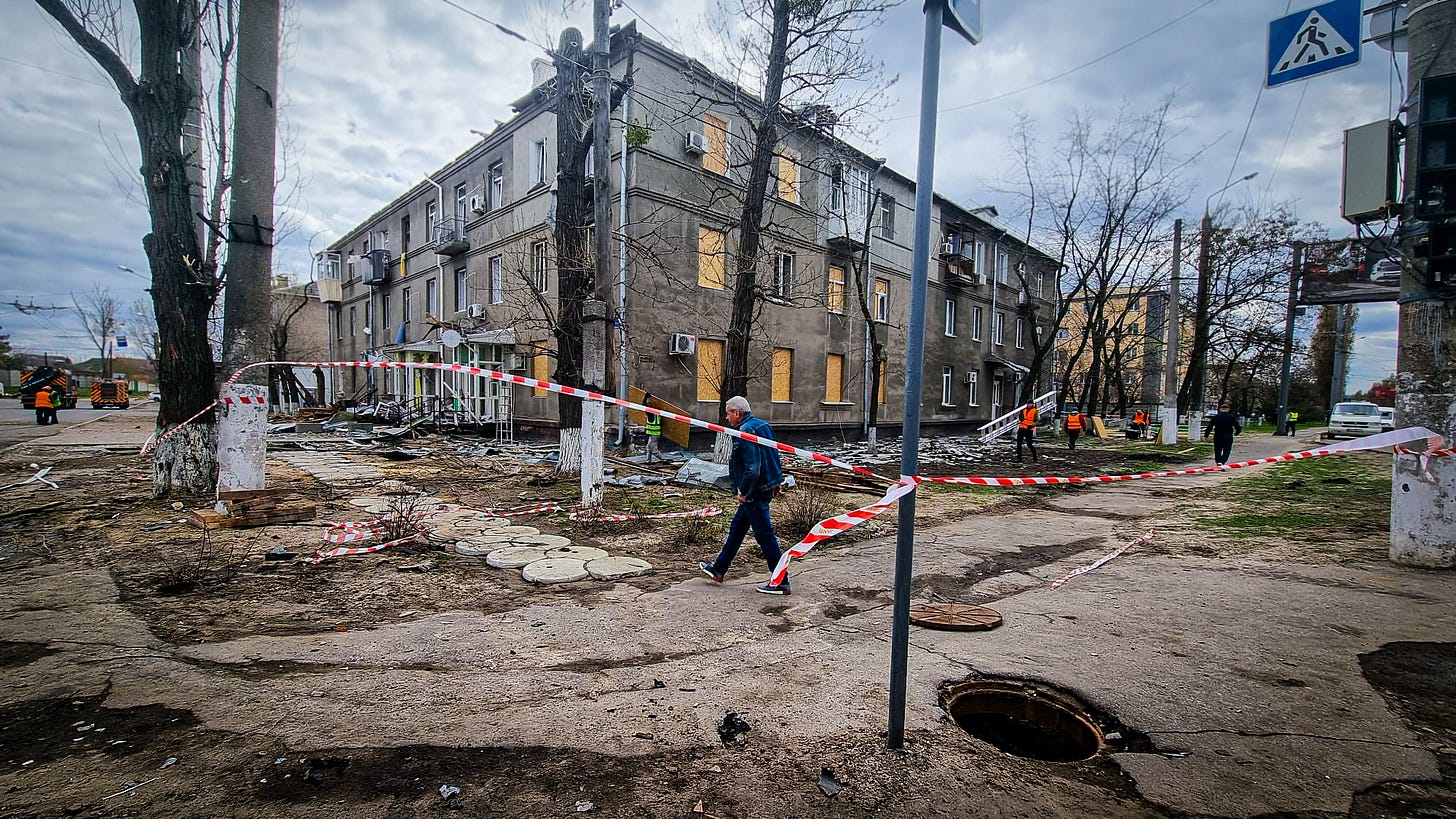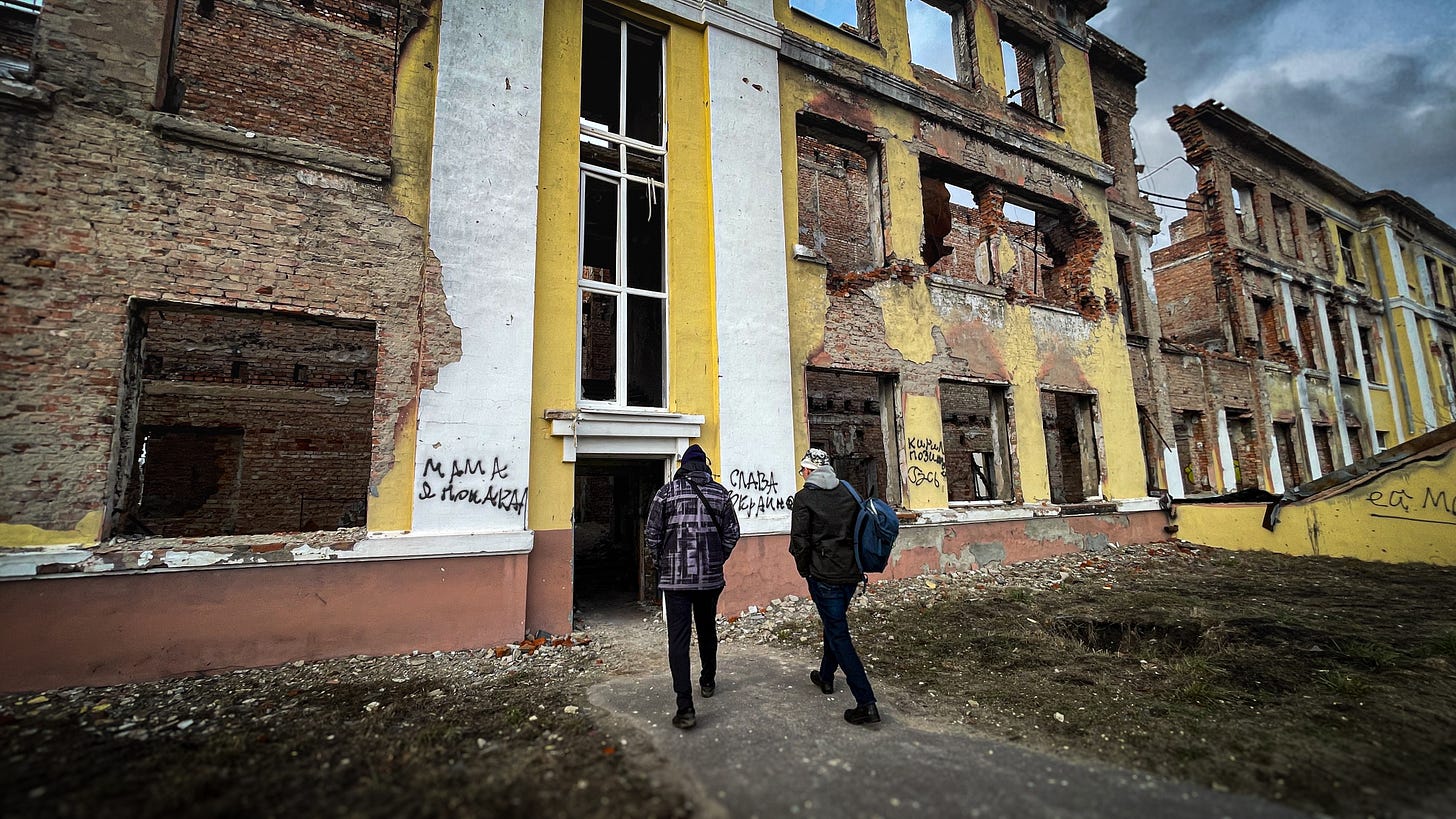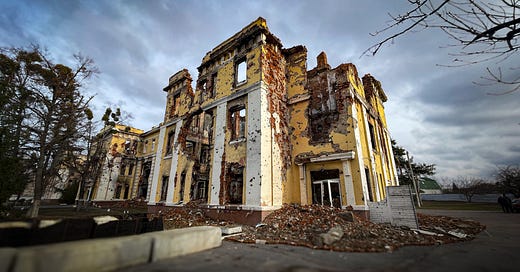Three years ago today an elite squad of Russia's ‘spetsnaz’ special forces was making a last stand in Ukraine’s second city of Kharkiv. Surrounded, outgunned, and unwilling to surrender, they set up firing points in a school to the north-east of the centre. By day’s end they would almost all be dead.
On a recent trip to Kharkiv I visited the school to hear about the battle, an event that decimated one of Russia’s most storied special forces units. A local, who was once a pupil at the school, led me around and explained what happened that day.
On the evening of 23rd Feb 2022 the soldiers of the 2nd Guards Spetsnaz Brigade, one of Russia’s most storied units, made final preparations for a pre-dawn advance into Ukraine.
The unit, formed in 1962 during the Cold War to give the GRU - Soviet military intelligence - their own behind-enemy-lines capability in the event of a Third World War, is the Russian equivalent to the British SAS or the US Navy Seals.
It had fought in both Chechen wars, the Russo-Georgian War of 2008, and taken part in Russia's earlier incursion into eastern Ukraine in 2014, according to Ukrainian intelligence.
One of their former members, Dmitry Utkin, had won particularly prominence. He had co-founded the private military company Wagner with Yevgeny Prigozhin. Indeed the mercenary group was named after Utkin’s favourite composer.
As the 2nd Guards Spetsnaz Brigade crossed the border and headed south they were expecting little resistance. Their superiors had told them that the Ukrainian will to fight would be weak and within two or three days Kharkiv would be in Russian hands.
Instead, by the end of the fourth day, most of their number would be dead - burned, shot, or blown up - in the oblong-shaped Specialist School 134 in north-east Kharkiv.
"They were offered a chance to give up and be taken prisoner," Pavlo, 60, an electrician who studied at the school and lives nearby, told me as he guided me around. "But they refused. In the battle that followed almost all of them were killed."
Within the Russian military spetsnaz are in a class of their own. I should know. In the early 2000s I spent more than a week with one of their units deployed to Chechnya.
I wasn’t officially embedded - the arrangement was more irregular than that. Indeed I got into Chechnya by masquerading as a spetsnaz captain, complete with borrowed uniform and 5mm buzz cut.
For the next several days I got to watch these men up close. We drank vodka together, took a sauna together, and, on one occasion, I even went on operation with them, perched on top of an eight-wheel armoured personnel carrier and wearing enough body armour to bring a young elephant to its knees.
And, as is the Russian way, the men I was with were warm and welcoming hosts, and cruel and brutal to anyone they considered to be an enemy. In unguarded moments they told me of Chechens they had beaten, tortured and even kept in holes in the ground before killing them.
“There are people we had to let go,” the unit commander told me euphemistically.
I first came across spetsnaz while covering a notorious terrorist attack on a theatre in Moscow in Oct 2002. Around 50 Chechen militants had taken control of the theatre and taken hostage more than 800 members of the audience. They demanded that Russian troops withdraw from their homeland.
As I watched from a hidden perch the Russians first pumped a fentanyl-based knock-out gas into the building. Then heavily-armoured spetsnaz soldiers smashed their way in and shot dead each of the unconscious hostage-takers.

A year later, after several secretive meetings and the provision of ‘gifts’ to smoothe my way, I found myself on a military transport plane heading for an army base in southern Russia.
I suspect that most of the men I spent time with that week had left the military by the time the latest war began in 2022. Of those that were still serving many of them are probably dead. Spetsnaz has taken huge casualties in Ukraine.
In the early days of the Russian invasion much attention was focussed on Kyiv.
With the Kremlin's forces bearing down on the capital from the north, and a fierce battle unfolding at Hostomel airport just outside the city, the fate of Volodymyr Zelensky and his government were hanging in the balance.
Many of the international journalists that had stayed in Ukraine were in the capital. Some rushed to the outskirts to cover street battles as the first Russian columns advanced into Irpin and Bucha, suburbs later to become notorious for the war crimes committed there.
But in Kharkiv, Ukraine's second city, the battles were more fierce.
Estimates vary but, according to Ukrainian sources, between February and May, when the Russians finally gave up trying to take the city and retreated, up to 4,000 combatants were killed and the Russians lost up to 300 vehicles including 130 tanks.
Meanwhile more than 600,000 inhabitants, a third of the city's total population, were evacuated as Russian missiles rained down, destroying many of the administrative buildings, and killing more than 500 civilians.
Today the tempo of the war in Kharkiv has slowed. But the scars are still everywhere to be seen. In the Kyivsky district, a 15 minute cab ride from the centre, the houses are marked by Russian bullet holes.
School No 134, meanwhile, where the spetsnaz soldiers died, is a chipped and cratered hulk of a building. A Ukrainian soldier who goes by the call sign ‘Balu’ and took part in the fighting remembers that day well.

"They were very professional," he said of the Russian special forces in a video posted online about the battle. "They didn't make a single unnecessary movement or take a single unnecessary shot."
‘Balu’ told how the Ukrainians blocked the main roads into town and when the Russians set up a position in the school, they surrounded it. The ensuing battle lasted from 9.00am until 10.00pm.
The Ukrainians - a mixture of professional soldiers, police and volunteers - managed to occupy the ground floor of the school and push the Russians up to the first and second floor, but even then they couldn't dislodge them.
Finally the Ukrainian commander ordered his men out and called in a tank. It fired round after round into the building. Eventually the main gas line exploded and the school began to burn.
"It was a brutal battle,” Pavlo said as we walked around the wrecked building. “In the end everything began to burn. I have no idea how many Russians died but some of their bodies are still here. They just refused to give up."
“I wish those motherf…..s could be resurrected just so we could kill them again," ‘Balu’ said. "But, still, they deserve our respect."
NEWS & LINKS
+ To watch eye-witness testimony from ‘Balu’ the Ukrainian soldier who took part in the battle, click here. (You will have to switch on subtitles to watch in English.)
+ To see a video of an attack on the Kharkiv regional administration building click here.






So powerful ... and interesting ... from J.